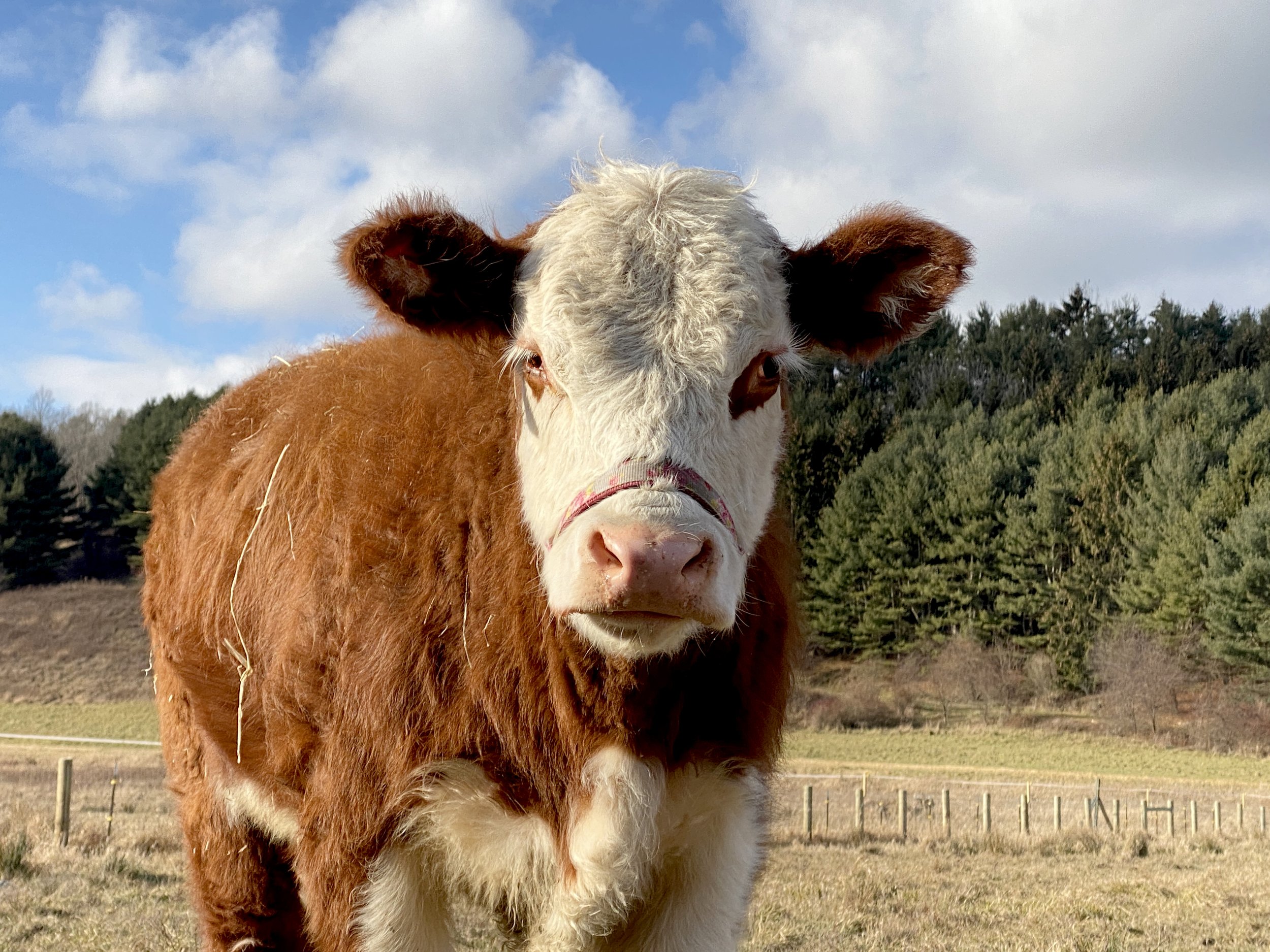Cowabunga! Have you…herd?
Co-founders Peter Nussbaum & Gabrielle Stubbert with Dexter, aka Giant Mushy Pasture Puppy, known for his scratchy (but sweet!) kisses.
Tamerlaine’s herd is AH-moozing! The Spectacular Seven will melt your heart. That’s Dexter and yeah—he’s smiling!
One look at these gentle giants, with their sweet lows and long lashes, and you’ll want to nothing more than to hug right up on them.
And that’s…just fine with them.
How Now, Brown Cow?
Technically, only female bovines are cows. Males are bulls if they’re intact for breeding, or steers if not. But to us, they’re all cows. We don’t want to label them by their use, like big ag.
Speaking of big: cows have personalities as big as they are. And that can be REALLY big.
Just like us, cows are social. Even at Tamerlaine, it’s easy to tell which cows are BFFs! And, just like us, some enjoy company more than others! When cows lived in the wild, females formed large herds, where males visited to mate. Today, mothers and babies still have very strong bonds.
There’s a reason we call these giant snugglers “pasture puppies.” Did you ever play ball with your dog? Yeah…well, guess who else likes to play with toys? And that’s just the beginning. Check out these fun facts about cows!
It’s not all good news…
Cashew & Oats, our boys born in the dairy industry.
There are over 1 billion cows on Earth—and very few of these friendly, fuzzy bovines are grazing happily on a farm. The majority live short lives in factory farms: cruel, filthy places where they are separated from family and friends, and never see the outdoors.
In the dairy industry, cows are artificially inseminated over and over. Within hours of being born, calves are removed from their mothers forever—usually before they can even walk. Males will live alone, isolated and tethered at the neck to prevent movement. Many “crates” are too small for a calf to turn around as they quickly grow. These boys are killed for veal anywhere between 16-20 weeks.
Females born into the dairy industry will be placed in hutches until they are old enough to enter the system as a milk-producing machine—they share the fate as the mothers they never knew.
In nature, a cow can live up to 20 years. At a dairy farm, they are killed in less than half that time. Where cows are raised for “beef”, the timeline is even shorter. And the Good News?
It’s not all bad news though! You can opt out. You don’t have to support this cruelty, or the industry. It’s SO easy. Check out our tips here.



